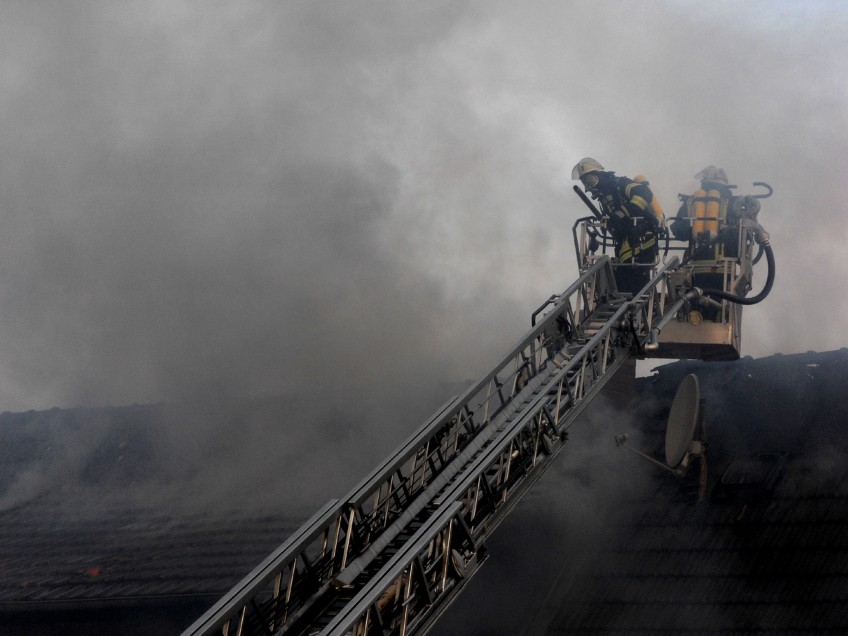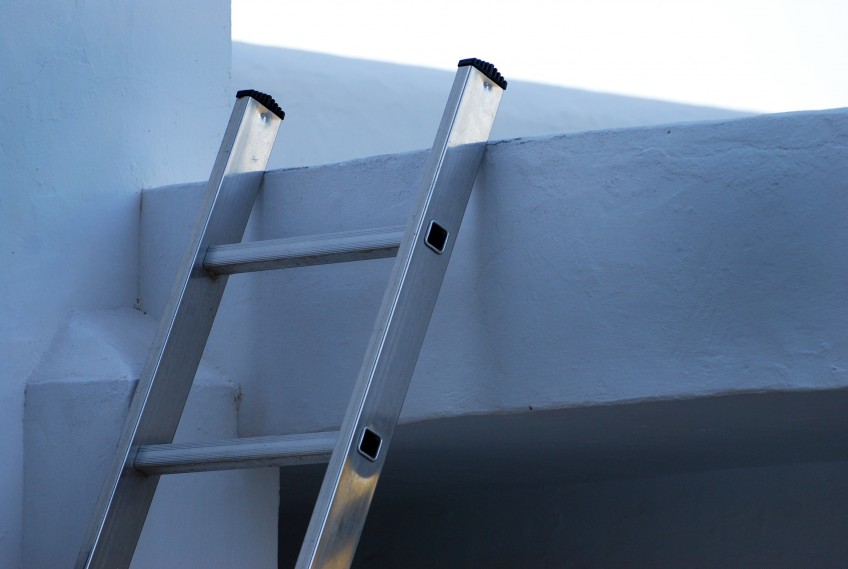Introduction
Keeping your ladders in proper condition and inspecting them regularly is critical to good ladder safety. Don't skip this important tutorial on how to inspect a ladder as it just may save your life!
Step by step
After you've gotten your ladder out and in to a clean area with good lighting, use the following five step checklist to make sure your ladder is in good condition for the year.
- Check Rungs (or steps)
Rungs are what you step on when you climb the ladder.
With the ladder on the ground, check each rung by giving it a good shake and see if anything is loose. A rung that slips or moves is very dangerous.
Check the top of each rung or step to make sure any traction (grooves, rough paper, etc.) is as designed. Build up of dirt, peeling paper, or paint can cause a rung to be slick and slippery. Clean the rungs as needed to ensure they function as designed.
If you have a wooden ladder, look for signs of splintering or rot. If there's any sign at all, we recommend you destroy the ladder (a bonfire is always a good idea) as it is dangerous and you don't want to risk you or anyone else using it! - Check Rails
Rails are the long sections you hold on to when climbing the ladder. They are what the rungs attach to.
Gently run your hands up each side of the rails while looking for any corrosion, splinters, cracking, or other damage. Be careful if you have a fiberglass ladder as old fiberglass will splinter and you'll get nasty glass splinters. Also check for any loose rivets, screws, etc.
Get down on one end of the ladder and look down the length of the rail, as if checking an arrow, for straightness. If there is any bending or warping you should be able to see it. This is serious as it is signs of a deeper problem and causes the ladder to not properly distribute weight. Do not use if you see bowing or bending along the length of any of the rails. - Check Feet
With the ladder still on the ground, check the feet on the bottom. An extension ladder will usually have pivoting feet designed to plant firmly on the ground when the ladder is leaned at the appropriate angle. Everything rests on these so make sure they are right!
Check the hardware holding the feet on to ensure it is in good condition. While the feet will pivot, the rivets or bolts they are attached to should not.
Check the material on the base of the feet. Some will have rubber bottoms designed to stick securely to hard surfaces. These should be in good condition and well secured to the rest of the foot. - Check Labels
You might be surprised to see this one on here, but it's important! Quality ladders will have a label that gives important information regarding the Duty Ratings. Below is a breakdown of the weight capacity associated with each Duty Rating:
Type IAA (Extra Heavy Duty) 375 pounds Type IA (Extra Heavy Duty) 300 pounds Type I (Heavy Duty) 250 pounds Type II (Medium Duty) 225 pounds Type III (Light Duty) 200 pounds
Source: American Ladder Institute
Checking that this label is properly displayed will ensure that you don't ever exceed the Duty Rating for your ladder. When considering the weight, remember not only include your own weight but to also include any tools you carry or store on the ladder, or loads you will be carrying up (shingles, paint, etc.) - Check Spreaders or Pulleys
If you have a stepladder, you will likely have some sort of spreader bar that keeps the ladder locked in an A-shape.
Check the spreader bars by setting the ladder up and putting the spreaders in place. Do they lock firmly and easily? Lubricate the pivoting mechanism to ensure it easily pivots in to place. Failure to lock the spreader bars is a chief cause of ladder collapse with stepladders.
Check the connection points of the spreaders on the rails. Are the rivets holding them in place secure? There shouldn't be any risk of these pulling off once the ladder is in place.
If you have an extension ladder, you'll have some sort of rope and pulley mechanism that you use to extend the ladder. Check the pulley to make sure everything is as designed and lubricate any moving parts.
Check the rung locks, which are what holds the ladder in place once extended. Lubricate any moving parts and ensure all hardware is properly secured.
Check the rope and make sure it isn't frayed or cut. While the ladder doesn't rely on the rope to stay up once extended, a broken rope could cause the ladder to fall suddenly while extending and cause injury.
So what do you do if your ladder(s) failed any or all of the above checks? First of all, don't attempt any adhoc repairs. Do it right or don't do it at all! You don't want to trust your life to superglue and duct tape. If the ladder is old and beyond repair, destroy it and buy a new one. If you can order the right replacement parts and repair to original condition, go ahead and do it.
What if your ladder just has some cosmetic flaws like paint, light fiberglass shed, or surface level spiderweb cracks? Give it a good cleaning (for paint or dirt) and use a spray lacquer to cover any light shedding. If the issues are deeper than surface level though, get rid of the ladder.
That's it! Mark this complete and we'll remind you to inspect again in a year. We'll also have periodic maintenance items throughout the year based on your ladder type.




